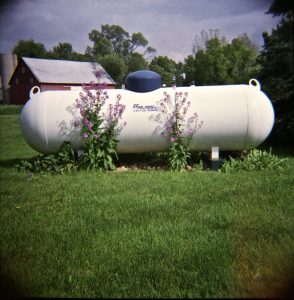4.4 Composition, Decomposition, and Combustion Reactions
Learning Objectives
- Recognise composition, decomposition, and combustion reactions.
- Predict the products of a combustion reaction.
Three classifications of chemical reactions will be reviewed in this section. Predicting the products in some of them may be difficult, but the reactions are still easier to recognise.
Composition and Decomposition Reactions
A composition reaction (sometimes also called a combination reaction or a synthesis reaction) produces a single substance from multiple reactants. A single substance as a product is the key characteristic of a composition reaction. There may be a coefficient other than one for the substance, but if the reaction has only a single substance as a product, it can be called a composition reaction. Let's consider the following reaction:
[latex]\ce{2H}_{2}{(g)} + \ce{O}_{2}{(g)} → \ce{2H}_{2}\ce{O}{(ℓ)}[/latex]
In this reaction, water is produced from hydrogen and oxygen. Although there are two molecules of water being produced, there is only one substance—water—as a product. So, this is a composition reaction.
A decomposition reaction starts from a single substance and produces more than one substance; that is, it decomposes. One substance as a reactant and more than one substance as a product are the key characteristics of a decomposition reaction. For example, if we look at the decomposition of sodium hydrogen carbonate (also known as sodium bicarbonate):
[latex]\ce{2NaHCO}_{3}{(s)} → \ce{Na}_{2}\ce{CO}_{3}{(s)} + \ce{CO}_{2}{(g)} + \ce{H}_{2}\ce{O}{(ℓ)}[/latex]
We can see that sodium carbonate, carbon dioxide, and water are produced from the single substance sodium hydrogen carbonate.
Composition and decomposition reactions are difficult to predict, but recognising them is not so difficult.
Example 4.4.1
Problems
Identify each equation as a composition reaction, a decomposition reaction, or neither.
- [latex]\ce{Fe_{2}O}_{3} + \ce{3SO}_{3} → \ce{Fe_{2}(SO_{4})}_{3}[/latex]
- [latex]\ce{NaCl} + \ce{AgNO}_{3} → \ce{AgCl} + \ce{NaNO}_{3}[/latex]
- [latex]\ce{(NH_{4})}_{2}\ce{Cr_{2}O}_{7} → \ce{Cr_{2}O_{3}} + \ce{4H_{2}O} + \ce{N}_{2}[/latex]
Solutions
- In this equation, two substances combine to make a single substance. This is a composition reaction.
- Two different substances react to make two new substances. This does not fit the definition of either a composition reaction or a decomposition reaction, so it is neither. In fact, you may recognize this as a double-replacement reaction.
- A single substance reacts to make multiple substances. This is a decomposition reaction.
Test Yourself
Identify the equation as a composition reaction, a decomposition reaction, or neither.
[latex]\ce{C_{3}{H}_{8}} → \ce{C_{3}H_{4}} + \ce{2H}_{2}[/latex]
Answer
Decomposition.
Combustion Reactions
A combustion reaction occurs when a reactant combines with oxygen many times from the atmosphere and produces oxides of all other elements as products; any nitrogen in the reactant is converted to elemental nitrogen, [latex]\ce{N}_{2}[/latex]. Many reactants, called fuels, contain mostly carbon and hydrogen atoms, reacting with oxygen to produce [latex]\ce{CO_{2}}[/latex] and [latex]\ce{H_{2}O}[/latex]. For example, the balanced chemical equation for the combustion of methane, [latex]\ce{CH}_{4}[/latex], is as follows:
[latex]\ce{CH}_{4} + \ce{2O}_{2} → \ce{CO}_{2} + \ce{2H_{2}O}[/latex]
Kerosene can be approximated with the formula [latex]\ce{C_{12}H_{26}}[/latex], and its combustion equation is:
[latex]\ce{2C_{12}H_{26}} + \ce{37O}_{2} → \ce{24CO}_{2} + \ce{26H_{2}O}[/latex]
Sometimes, fuels contain oxygen atoms, which must be counted when balancing a chemical equation. One common fuel is ethanol, [latex]\ce{C_{2}H_{5}OH}[/latex], whose combustion equation is:
[latex]\ce{C_{2}H_{5}OH} + \ce{3O}_{2} → \ce{2CO}_{2} + \ce{3H_{2}O}[/latex]
If nitrogen is present in the original fuel, it is converted to [latex]\ce{N}_{2}[/latex], not to a nitrogen-oxygen compound. Thus, for the combustion of the fuel dinitroethylene, whose formula is [latex]\ce{C_{2}H_{2}N_{2}O_{4}}[/latex], we have:
[latex]\ce{2C_{2}H_{2}N_{2}O_{4}} + \ce{O}_{2} → \ce{4CO}_{2} + \ce{2H_{2}O} + \ce{2N}_{2}[/latex]
Example 4.4.2
Problems
Complete and balance each combustion equation.
- the combustion of propane, [latex]\ce{C_{3}H_{8}}[/latex]
- the combustion of ammonia, [latex]\ce{NH_{3}}[/latex]
Solutions
- The products of the reaction are [latex]\ce{CO}_{2}[/latex] and [latex]\ce{H_{2}O}[/latex], so our unbalanced equation is [latex]\ce{C_{3}H_{8}} + \ce{O}_{2} → \ce{CO}_{2} + \ce{H_{2}O}[/latex]. Balancing (and you may have to go back and forth a few times to balance this), we get [latex]\ce{C_{3}H_{8}} + \ce{5O}_{2} → \ce{3CO}_{2} + \ce{4H_{2}O}[/latex].
- The nitrogen atoms in ammonia will react to make [latex]\ce{N}_{2}[/latex], while the hydrogen atoms will react with [latex]\ce{O}_{2}[/latex] to make [latex]\ce{H_{2}O}[/latex], thus [latex]\ce{NH_{3}} + \ce{O_{2}} → \ce{N_{2}} + \ce{H_{2}O}[/latex]. To balance this equation without fractions (which is the convention), we get [latex]\ce{4NH}_{3} + \ce{3O}_{2} → \ce{2N}_{2} + \ce{6H_{2}O}.[/latex]
Test Yourself
Complete and balance the combustion equation for cyclopropanol, [latex]\ce{C_{3}H_{6}O}[/latex].
Answer
[latex]\ce{C_{3}H_{6}O} + \ce{4O}_{2} → \ce{3CO}_{2} + \ce{3H_{2}O}[/latex]

Key Takeaways
- A composition reaction produces a single substance from multiple reactants.
- A decomposition reaction produces multiple products from a single reactant.
- Combustion reactions occur when substances react with oxygen gas.

